Viola primulifolia
Violaceae
John and I went today to a favorite site, Kiplinger Natural Area in Stuart, Florida, to see what’s shaking on Groundhog Day. Shaking were many small, near-the-ground wildflowers, each with a subterranean quirk:
Bluethreads (Burmannia biflora) thrives on symbiotic fungi underground.
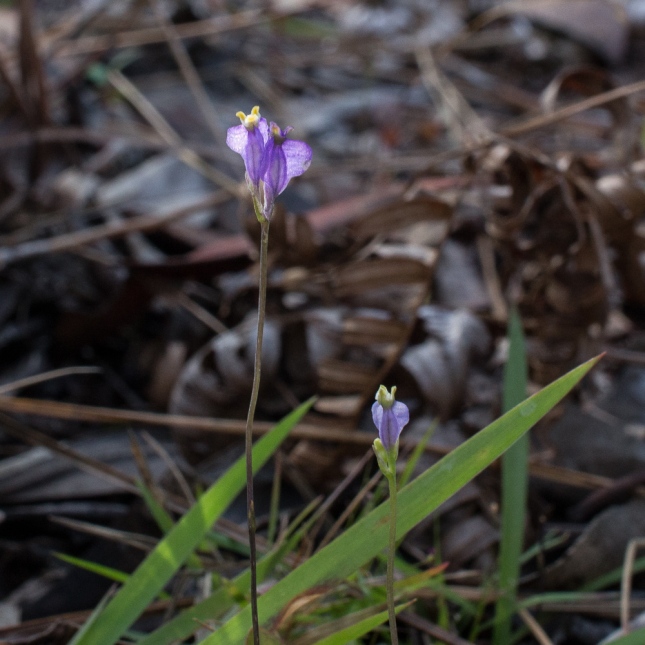
Bluethreads today in Kiplinger. Except for seed and fruit, today’s photos by John Bradford.
Innocence (Houstonia procumbens), like a peanut, forms its fruits underground.

Innocence
Zigzag Bladderwort (Utricularia subulata) eats its prey underground.
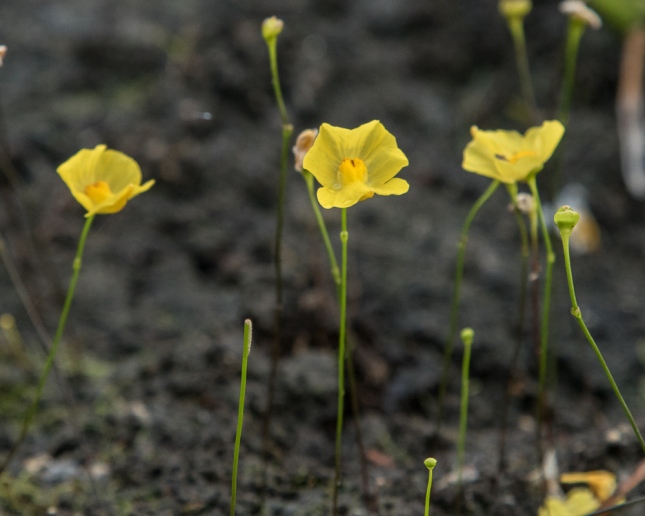
Utricularia gibba Bladderwort
But today is about a species spread all over North America, but not seen much around here: Primrose-Leaf Violet thinks Feb. 2 is springtime, flowering and fruiting in moist nooks and sunny crannies. There’s little in the world prettier than a violet, and this one is a stunner if you don’t mind tiny, having bleached-white flowers decorated with purple nectar guides.
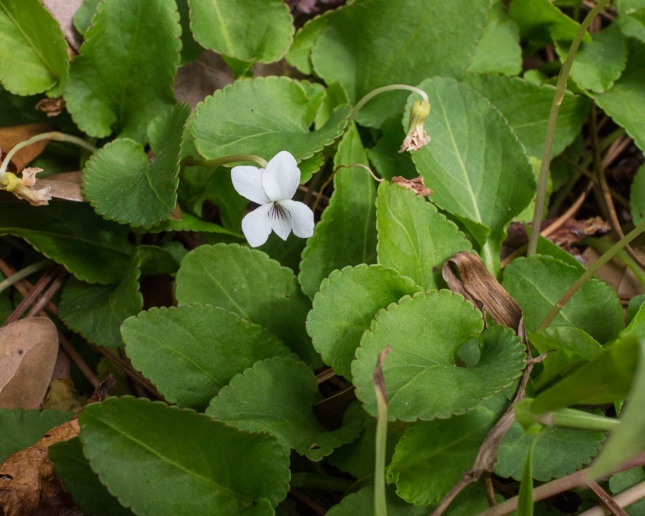
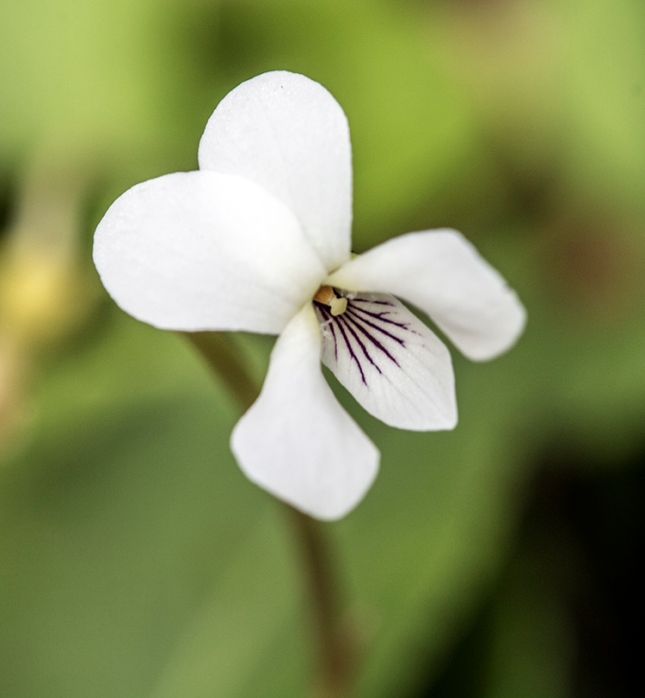
Actually, not all its flowers are lookers. Like most violets, today’s has “cleistogamous” (kleist-OG-ah-mus) flowers, that is, small, hidden, self-fertilizing, and never opening…yet making fruits and seeds. In other words, a plan B in case the main flowers don’t achieve proper pollination, and a system for cloning the mother plant.
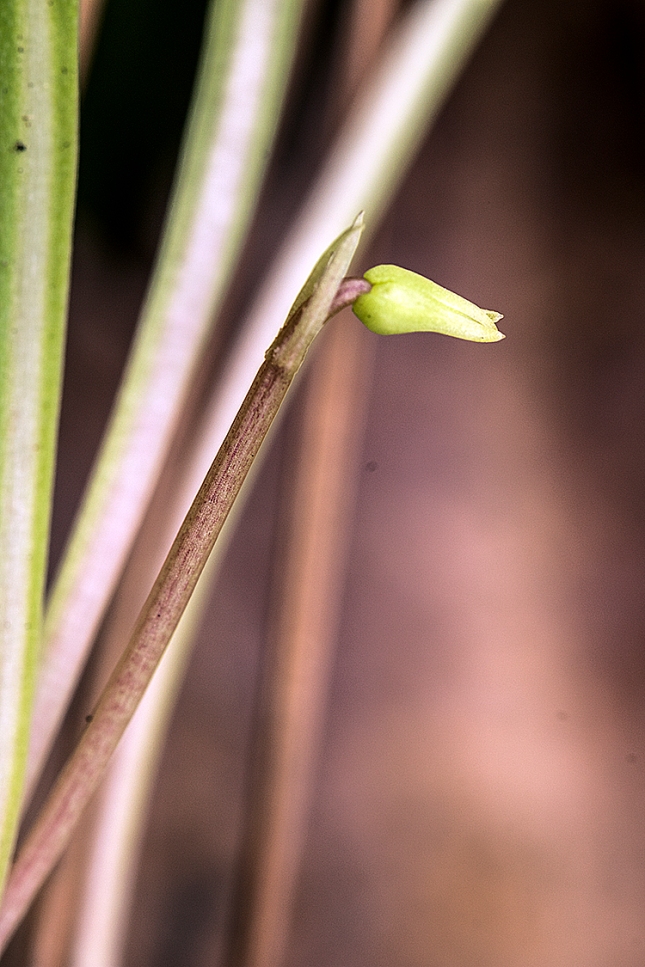
Cleistogamous flower never opens but does make seeds.
Cloning may not sound important, but keep reading:. Although unproven so far as I can find, many botanists regard the Primrose-Leaf Violet as an historical hybrid between two other species. If that is correct, at the time of origin the new hybrid may have had a reproductive problem. With whom does a lonely hybrid exchange pollen? And worse, hybrid plants often have partial or full sterility. You know, like a mule. Cleistogamous flowers remove those problems to let it go forth and multiply immediately. Then over time fertility conceivably improved.
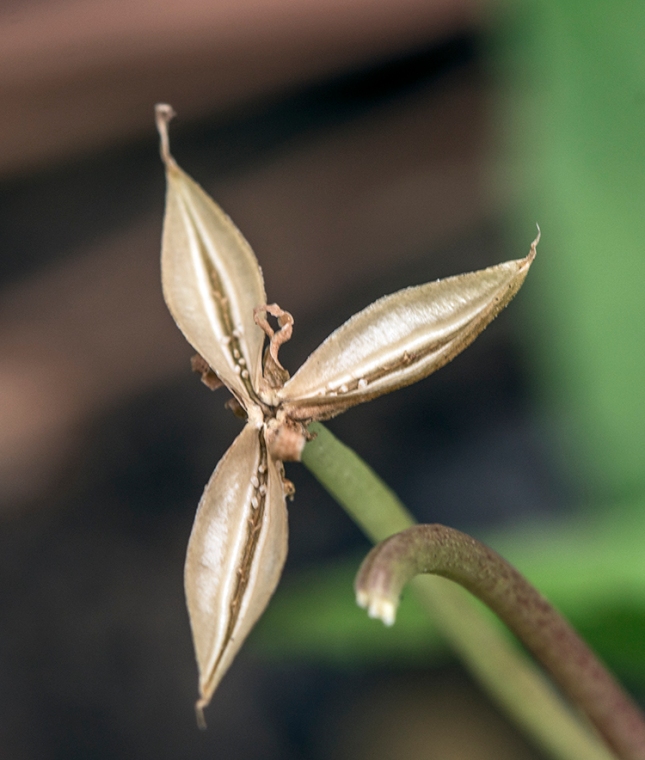
Another violet oddity is ant dispersal. Having hungry ants haul your seeds back to the pre-fertilized pre-tilled ant hill is handy, unless the ants eat the seeds. But no worries. Some violets have toxic seeds, which might protect them from ant bites. But are the ants thus disincentivized? No. The seeds gift the insects with a separate food package called an elaiosome (ee-LIE-oh-some) affixed to the seed, attractive and acceptable to eat. Some seeds do not germinate until the elaiosome is nipped.
The photo below is a seed from the fruit capsule, apparently immature*. The elaiosome seems to be forming on the left end, although my interpretation is a little speculative. Ask an ant.
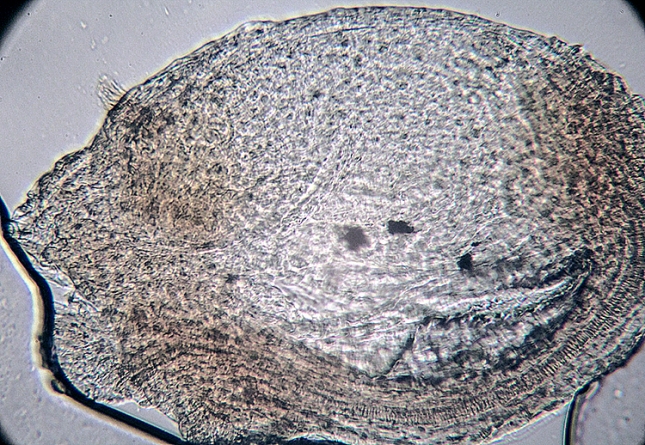
Immature (?) seed. I think the elaiosome is on the left.
theshrubqueen
February 3, 2018 at 8:14 pm
My favorite, unintended garden plant. Haven’t seen one in years.Thanks.
Steve
February 18, 2018 at 5:41 am
Say yes to Violets! I think that Utricularia might be U. gibba. It can behave as a terrestrial or floating Bladderwort.
George Rogers
February 25, 2018 at 3:40 pm
Steve…just found you comment on U. gibba…will relabel thanks